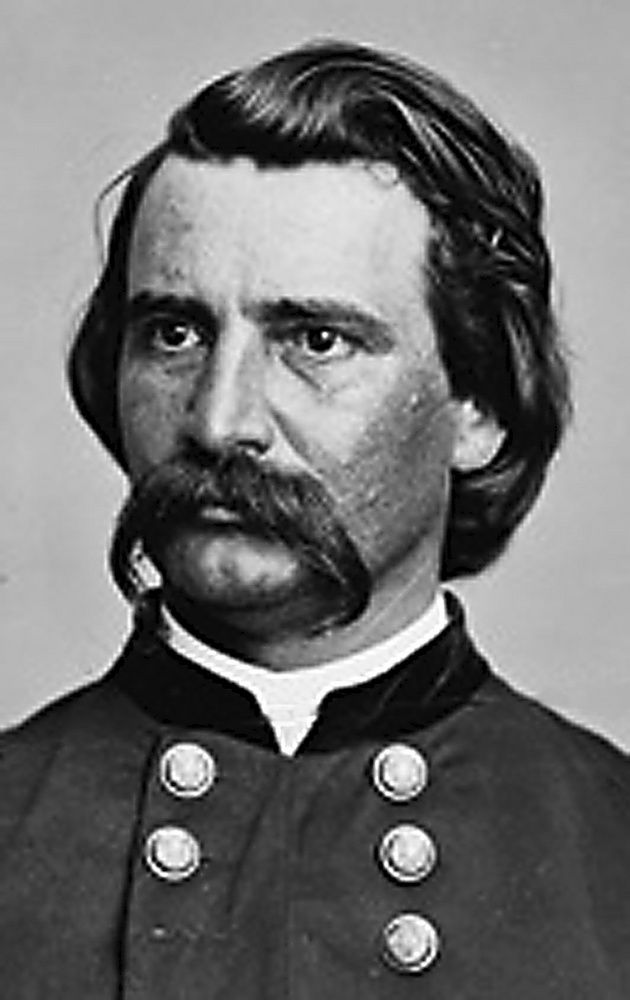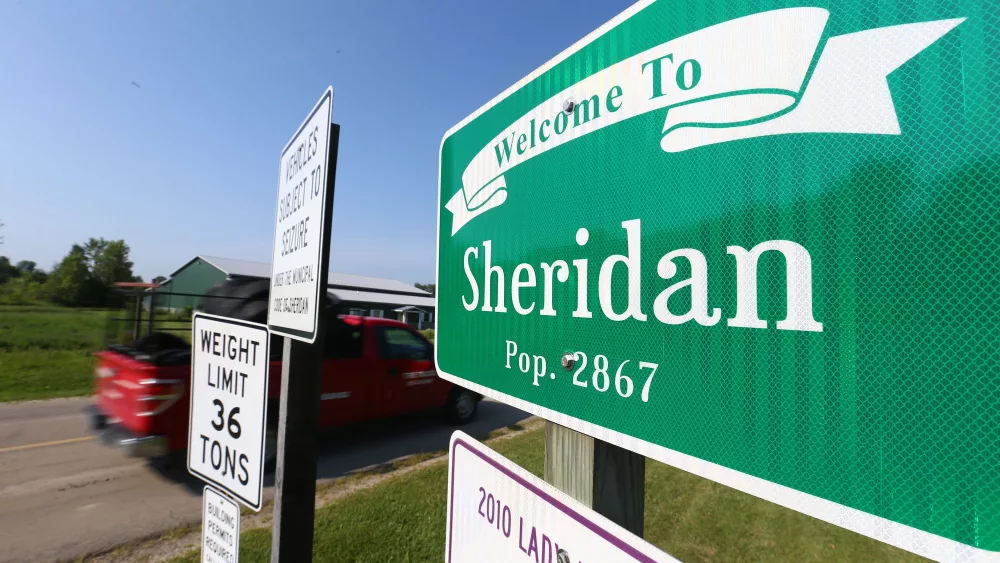
Memorial Day celebrations began to spring up on local levels just after the Civil War. But a Civil War hero from Illinois was the first to make the day official.
Maj. Gen. John A. Logan, one of the great volunteer officers of the war, is credited by many as the first to declare Memorial Day an official holiday. Logan declared an official holiday as commander-in-chief of the Grand Army of the Republic, the foremost Civil War veterans’ organization, in 1868.
Though Logan was the first to establish a national remembrance, there is debate on the site of the actual first Memorial Day commemoration.
“There’s a lot of controversy on that,” said Michael Jones, director of the Gen. John A. Logan Museum in Murphysboro, Illinois. “There was a Memorial Day celebration in Woodlawn Cemetery in nearby Carbondale in which Logan was the keynote speaker, and I believe that played a role.”
The Carbondale celebration, on April 29, 1866, is thought by many to be the nation’s first community-wide observance. Some 212 area veterans participated in the event.
However, Jones notes a discrepancy on the inspiration for Logan’s action even within his own family. In her autobiography “Reminisces of a Soldier’s Wife,” Logan’s wife Mary cites her own experience at a cemetery in Petersburg, Virginia, in 1868.
“Mrs. Logan saw the withered flowers and flags that had been placed in honor of the Confederates buried there,” remarked Jones. “She described this to her husband and said he should do something similar, which she says was the basis for his national declaration. She never mentions the Carbondale event.”
Whatever the reason, Logan was moved to take Memorial Day a step further. On May 5, 1868, he issued General Order No. 11, designating May 30 for “the purpose of strewing with flowers or otherwise decorating the graves of comrades who died in defense of their country during the late rebellion.”
Logan’s order stated that “no form or ceremony is prescribed,” but that individuals and communities were left to their own “fitting services and testimonials … cherishing tenderly the memory of our heroic dead.”
“I think Logan’s primary purpose was his fear, which is shared by many of us that all of the veterans would be forgotten. (Gen. Logan) wanted to ensure that we will still honor the men who died to keep the republic.”
Michael Jones, director of the Gen. John A. Logan Museum
In the first year of Logan’s declaration, an estimated 183 cemeteries hosted observances for Memorial Day, more commonly known as Decoration Day. A crowd of some 5,000, including keynote speaker and future President James A. Garfield, attended the first Memorial Day ceremony at Arlington National Cemetery that May 30. The following year, the remembrance was marked in over 336 communities in 31 states.
While the original order clearly applied to Northern soldiers, informal commemorations in the South became some of the earliest Memorial Day observances. Recent scholarly research also reveals a mass celebration, mostly of African-Americans, in Charleston, South Carolina, on May 1, 1865.
There, a parade of some 10,000, including Black Union infantry units, marched to a local horse track that had been converted to a prison for Union soldiers. Black workmen had re-buried at least 257 Union dead from a mass grave, inspiring the large gathering that included hymns, reading of scripture, and placing of flowers.
In 1864, women in Boalsburg, Pennsylvania, decorated the graves of their local dead soldiers, some whom had died at Gettysburg.
On April 25, 1866, just days before the Carbondale celebration, a group of ladies in Columbus, Mississippi, placed flowers on the graves of Confederates who died at the battle of Shiloh. Noticing some nearby Union graves that had been neglected due to lingering animosities, they also laid some flowers to honor those soldiers.
On May 5, 1866, the town of Waterloo, New York, began an annual community event to commemorate war dead. A century later, President Lyndon Johnson and Congress declared Waterloo as the “birthplace” of Memorial Day.
In 1967, Congress officially named May 30 as Memorial Day, though many elderly Americans still refer to the holiday by its traditional name, Decoration Day. Four years later, the Uniform Monday Holiday Act switched the holiday to the final Monday in May. Memorial Day has become a three-day weekend and the kickoff to summer for many.
Jones sees parallels in today’s Memorial Day celebrations and the deeper meaning of Logan’s General Order No. 11.
“I think Logan’s primary purpose was his fear, which is shared by many of us,” remarked Jones, “that all of the veterans would be forgotten. He wanted to ensure that we will still honor the men who died to keep the republic.”
• Tom Emery is a freelance writer and researcher from Carlinville, Illinois. He may be reached at 217-710-8392 or ilcivilwar@yahoo.com.









